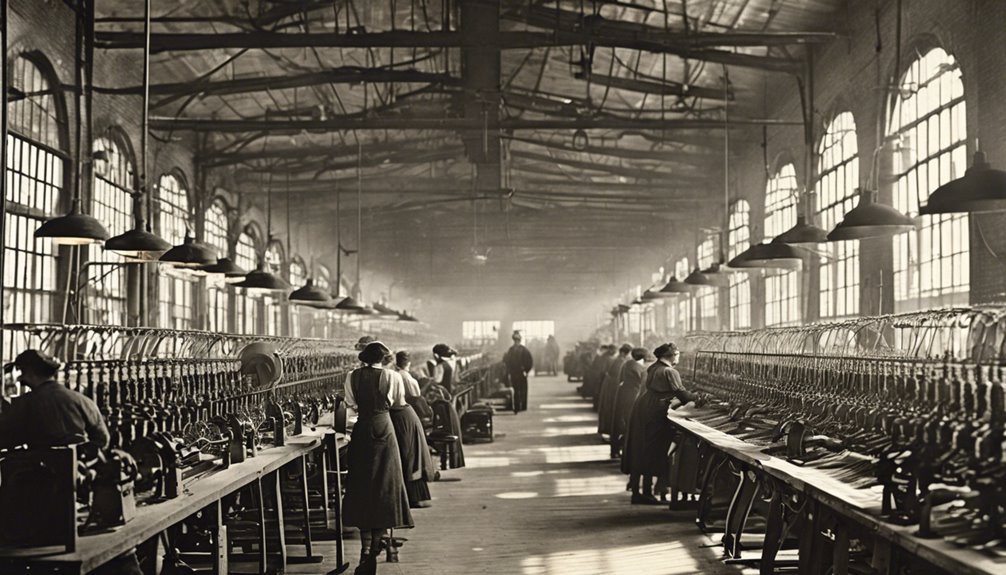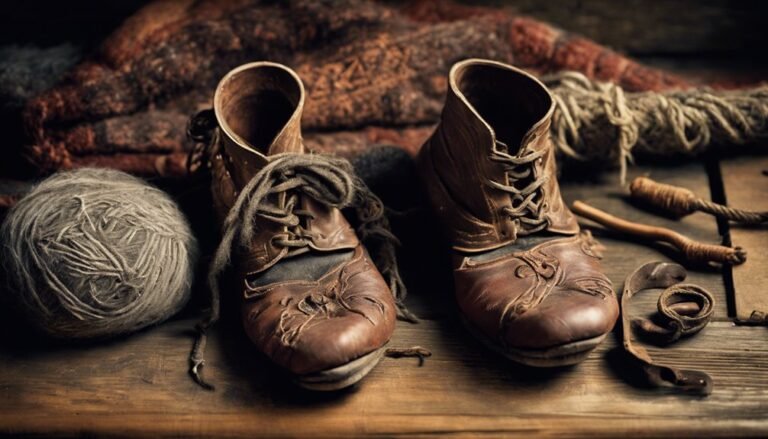The First-Ever Sock Factory: How Mass Production Revolutionized Footwear
Imagine walking down the bustling streets of an 18th-century town, where the clatter of horse-drawn carriages mingles with the chatter of citizens.
In this vibrant setting, a revolutionary change in the world of fashion is quietly unfolding. The establishment of the first-ever sock factory marks a pivotal moment, transitioning from labor-intensive hand-knitting to the wonders of mechanization.
This innovation didn't just speed up production; it made high-quality socks accessible to the masses, transforming them from luxury items into everyday essentials.
The ripple effects were profound, sparking economic growth, job creation, and urbanization, while also allowing socks to evolve into personal fashion statements.
Dive deeper into this fascinating period to uncover how an industrial shift changed the very fabric of society.
The Dawn of Mechanized Knitting

Though the textile industry had long relied on handcrafting techniques, the dawn of mechanized knitting marked a transformative era in manufacturing. As you explore this pivotal moment, you'll discover how mechanized innovation in the late 18th century reshaped your understanding of production freedom. Imagine a world where knitting technology liberated skilled artisans from the labor-intensive processes of past generations. This shift began with the invention of the stocking frame in 1589, but it wasn't until the Industrial Revolution that these machines became truly revolutionary. By the 1800s, advances in knitting technology, such as circular knitting machines, allowed for mass production and greater consistency. This mechanization not only increased efficiency but also opened up a world of possibilities, empowering you with choice and variety.
From Hand-Knitted to Machine-Made: A New Era in Sock Production
As the 19th century unfolded, the change from hand-knitted to machine-made socks signified a pivotal shift in textile production. You witnessed a revolution where handcrafted uniqueness met industrial efficiency. This transformation began with the invention of the knitting machine, which dramatically accelerated production rates. Gone were the days of laboriously crafted socks, each one bearing the subtle imperfections of human touch.
| Hand-Knitted Socks | Machine-Made Socks |
|---|---|
| Time-consuming process | Rapid production |
| Unique imperfections | Uniform quality |
| Limited output | Mass availability |
| Artisan craftsmanship | Industrial precision |
The Economic Impact of Mass-Produced Footwear

The advent of mass-produced footwear, underpinned by the industrial revolution, marked a significant turning point in economic history. This transformation reshaped:
- Global Trade: Suddenly, the world was your market. Factories churned out footwear that could be shipped and sold across continents, altering international commerce.
- Labor Markets: As factories grew, so did jobs, pulling workers from rural fields to bustling urban centers. It sparked shifts in employment patterns, offering new freedoms yet also challenges.
- Price Accessibility: Mass production slashed costs, making shoes affordable for many. This democratization of footwear meant that everyone, not just the wealthy, could own multiple pairs.
These changes weren't just about socks and shoes—they were about opening doors to new economic opportunities and freedoms on a global scale.
Societal Changes Brought by Accessible Socks
With mass-produced footwear having reshaped economic landscapes, the ripple effects extended into everyday life through something as simple as socks. The advent of sock accessibility marked a turning point in the late 19th century when socks, once a luxury, became available to the masses. As more people donned these newfound staples, they felt a sense of freedom and individuality. This shift not only democratized comfort but also sparked a fashion evolution. Suddenly, socks weren't just about warmth; they became a canvas for personal expression. You could choose from a variety of colors and patterns, reflecting your spirit and style. The rise of accessible socks encapsulated a broader societal change, where individuality and self-expression began to take center stage in everyday attire.
Legacy and Modern Influence of Early Sock Factories

Though often overlooked, the legacy of early sock factories remains deeply embedded in the fabric of modern manufacturing and fashion industries. You can trace the evolution from rudimentary production lines to today's sustainable, culturally significant practices. Here's how early factories shaped current trends:
- Sustainability Practices: Early mass production set the stage for today's eco-friendly techniques, transforming how you think about ethical manufacturing.
- Cultural Significance: Sock styles that started in these factories have woven into cultural expressions, marking societal shifts and personal freedoms.
- Innovation: From hand-knitting to mechanization, factories revolutionized the speed and scale of production, paving the way for today's technological advancements.
These innovations highlight a journey through time, illustrating how the humble sock factory continues to influence your world.
Frequently Asked Questions
Who Invented the First-Ever Sock Knitting Machine?
You've probably wondered about the origins of knitting technology. William Lee invented the first-ever sock knitting machine in 1589. His creation sparked industrial innovation, paving the way for mass production and freeing people from manual sock knitting constraints.
What Materials Were Initially Used in Machine-Made Socks?
Initially, you'd find machine-made socks crafted from cotton fibers and wool blends. These materials offered durability and comfort, reflecting a shift towards efficient production methods that liberated consumers from the constraints of handmade alternatives.
How Did Workers React to the Advent of Sock Factories?
While sock factories promised efficiency, workers faced long hours and low wages. Some found satisfaction in stability, but others fought labor strikes for better conditions. Over time, worker satisfaction slowly increased as reforms were introduced.
Were There Any Environmental Impacts of Early Sock Production?
You'd notice early sock production brought sustainability concerns, as factories often ignored pollution issues. Initially, waste disposal methods were poor, impacting ecosystems. Over time, awareness grew, pushing for eco-friendly practices, aligning with society's evolving environmental consciousness.
How Did Fashion Trends Influence Early Sock Designs?
You'll find that fashion trends markedly shaped sock aesthetics, driven by cultural influences. As society evolved, socks mirrored these changes, reflecting shifts from plain practicality to vibrant expressions, influenced by societal norms and the freedom of self-expression.







